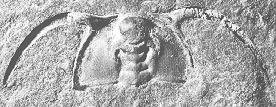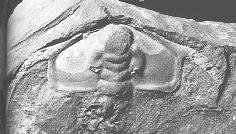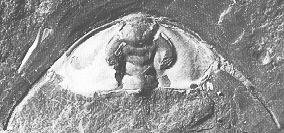Transitional Fossil Species, Part I 
This page contains several large pictures and loads slowly. Please be patient.
What Are Transitional Fossil Species?
A transitional fossil species, also called a “transitional form” or “missing link,” is something that is part way between two kinds of animals or plants. Paleontologists look for these as proof that one kind of animal descended from another. People who believe in evolution want to discover transitional forms as proof that simple life forms developed over time into something more complex. Stated another way, they claim that “more complex” organisms have common “less complex” ancestors. As we mentioned on our Creation versus Evolution page, this study of the evolutionary development of groups of organisms is called phylogeny. You can see a sample “phylogenetic tree” by clicking on the link below.
![]() See a simple “tree of life” by clicking here.
See a simple “tree of life” by clicking here.
To simplify our discussion, a rough approximation of this evolutionary path would be:
simple life —> fish —> amphibians —> reptiles —> mammals
Therefore a transitional form would be something that was halfway between being a fish and an amphibian, for example.
An Actual “Transitional Fossil Species”
We searched for, and found, an unbiased example of a transitional fossil species[1][2]. We are not biasing results by citing references that support the Bible’s creation account or by choosing a poor example of a transitional form that is easy to criticize. This is the best quality example we could locate. This transitional form bridges the gap between trilobites and, uh, well . . . trilobites. You see, although these “transitional fossil species” differ from each other, they are all still trilobites. You could see the same result if you examined dogs at a dog breeder. This is an example of microevolution and is not proof of macroevolution or the theory of evolution.
 This is the fossil head of a Bristolia insolens, a trilobite from the “youngest” geologic layer of these four examples.
This is the fossil head of a Bristolia insolens, a trilobite from the “youngest” geologic layer of these four examples.
 This is the fossil head of the Bristolia bristolensis, a trilobite from the “second youngest” geologic layer of these four examples.
This is the fossil head of the Bristolia bristolensis, a trilobite from the “second youngest” geologic layer of these four examples.
 This is the fossil head of the Olenellus mohavensis, a trilobite from the “second oldest” geologic layer of these four examples.
This is the fossil head of the Olenellus mohavensis, a trilobite from the “second oldest” geologic layer of these four examples.
 This is the fossil head of the Olenellus fremonti, a trilobite from the “oldest” geologic layer of these four examples.
This is the fossil head of the Olenellus fremonti, a trilobite from the “oldest” geologic layer of these four examples.
The Conclusion
These are great fossils, and we love these cool pictures. They are different from one another, and they nicely demonstrate microevolution. They do not demonstrate macroevolution or prove the theory of evolution. They support the Bible’s creation account, which states that different kinds of animals remain the same as when they were created. That is, dogs remain dogs and trilobites remain trilobites. We maintain that there is no true example of a transitional fossil available—and scientists have been trying to find one for a hundred years. If you believe you have a good example, please let us know: ![]()
![]() Click here to see Transitional Fossil Species, Part II. Did Some Dinosaurs Evolve Into Birds?
Click here to see Transitional Fossil Species, Part II. Did Some Dinosaurs Evolve Into Birds?
![]() Click to see Transitional Fossil Species, Part III. What About Ape Men?
Click to see Transitional Fossil Species, Part III. What About Ape Men?
![]() Click here to return to the Creation versus Evolution page.
Click here to return to the Creation versus Evolution page.
References
[1] Illustrations are from: Levi-Setti, R., 1993. Trilobites, 2nd. Edition. University of Chicago Press: Chicago, 342pp.
[2] talk.origins newsgroup - useful trivia
Copyright © 1998, 1999 by Clarifying Christianity (SM).
Printed copies of articles from this site may be circulated if those articles are reproduced in their entirety, along with their copyright notices. You may not charge for, request a donation for, or seek reimbursement from anyone for such copies. Links are OK. All rights reserved.
All information contained in Clarifying Christianity is a resource for questions dealing with Christian issues. It is not to be taken as Christian counseling. Seek a qualified Christian counselor for help with all such issues. If you choose to work with a Christian counselor, it is your responsibility to ask pertinent questions before you begin, to assure yourself of their qualities and abilities.
3013